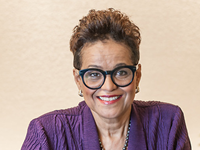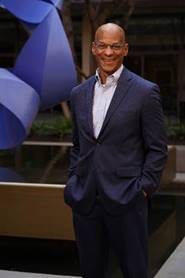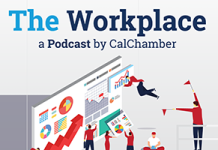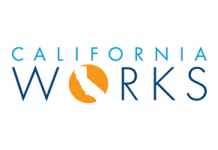 Fostering diversity and inclusion in the workforce requires strong intention and difficult conversations, Audra Bohannon, senior client partner at Korn Ferry, advises in a recent recorded panel discussion released by the California Chamber of Commerce.
Fostering diversity and inclusion in the workforce requires strong intention and difficult conversations, Audra Bohannon, senior client partner at Korn Ferry, advises in a recent recorded panel discussion released by the California Chamber of Commerce.
More than 1,200 people watched the live panel discussion, Putting Racial Justice Words Into Action: Best Practices and Strategies for California Businesses, held on July 15, which features an esteemed group of experts who lent their expertise on a wide range of issues related to bias, including the ways company leadership can respond to racism and move the needle on diversity in their organizations; how bias influences decision making, hiring, promotions and retention; and education and training programs to move workers into management.
A recorded video of the panel discussion, and other important resources and tips on diversity are available on the CalChamber’s Promoting Equality, Diversity and Opportunity in the Workplace webpage at: https://advocacy.calchamber.com/creating-diversity/.
Below is a brief summary of the best practices shared during the discussion. Readers are encouraged to view the panel discussion video for a more nuanced and in-depth discussion of these issues and how smaller teams can promote diversity. View the video at: https://www.calchamber.com/webinars/20200715-words-into-action.
Cassandra Pye

Cassandra Pye, executive vice president and chief strategy officer for Lucas Public Affairs, moderates the panel and kicks off the discussion by sharing four best practices employers can employ today:
- Educate yourself and your team: From books to podcasts to movies, there is a variety of free resources people can turn to for education on race and diversity. The first step is to learn about the issue. For a list of recommended books, please visit the bottom of this article.
- Look at the company numbers: Employers should take a hard look at who the company is hiring and who is being promoted, and look for patterns and potential problems.
- Assess your leadership team: Does your leadership team look like the communities your business serves? Are employees in leadership positions given bonuses for trying to foster diversity in the workplace or are they simply maintaining the status quo?
- Understand the role of bias: Similar to the first step above, education is key. It’s important to learn about what bias and all the different forms of bias are. Employers may find that conscious bias, unconscious bias, racial bias, or implicit bias may be driving a lot of the decision making in their organization.
Jonathan Mayes

Jonathan Mayes, senior vice president of external affairs and chief diversity officer at Albertsons and member of the CalChamber Board of Directors, touched on the role bias has on the decisions we make in our everyday lives and at work.
On their next hiring round, Mayes recommends that employers look for talent in different places, search more broadly and “be intentional as you think about who you’re going to hire and who you’re going to be promoting into roles.”
Mayes shared other tips and thoughts on fostering workplace diversity last month when he joined CalChamber President and CEO Allan Zaremberg on an episode of The Workplace podcast. Listen to the episode at: https://advocacy.calchamber.com/2020/06/30/tips-for-fostering-workplace-diversity/.
Audra Bohannon

Audra Bohannon advises employers to have courageous conversations and cautions that employers should be prepared for uncomfortable and awkward moments because conversations about race make people uncomfortable. She says that it’s OK to having those feelings but that it’s important to not stop moving.
She recommends that employers take a hard look at each of their departments and leadership teams and succession plans. Employers should then consider ways they can create mobility and mentorship opportunities for “everyone, not just the select few.”
Moreover, she stresses, it’s critical that just as employers dedicate resources to hiring a diverse talent pool, they should also invest in onboarding programs to help new hires succeed in their new positions.
Bohannon points out that many businesses have made efforts to hire more women in leadership positions, and that the process can also work for any other group.
“[The process]…is just going to be a little more challenging because you’re dealing with race…but it can be done if you’re serious,” she says.
Leland Jourdan

Leland Jourdan, chief diversity officer for Chevron Corporation, stresses the importance of educating oneself and being proactively anti-racist, not just intolerant of racism when one sees it.
For businesses looking for a talent pool, he suggests that employers turn to universities with ethnically diverse students. In this way, businesses can bring in employees with diverse backgrounds, thinking and talent.
Once employees are onboard, he advises, “make sure they have a community to connect to…something that makes people feel like they belong.” Employee networks can be based on factors such as gender, ethnicity, hobbies and more, he says.
Resources Mentioned
During the discussion, panelists recommend a variety of resources that listeners can turn to in order to learn more about bias and racism in the United States. They are:
- Books
-
- White Rage – Carol Anderson;
- White Fragility – Robin DiAngelo;
- Blindspot: Hidden Biases of Good People – Mahzarin R. Banaji & Anthony G. Greenwald; and
- The Authenticity Principle – Ritu Bhasin.
- Video
-
- Holy Post – Race in America – by Phil Vischer.


